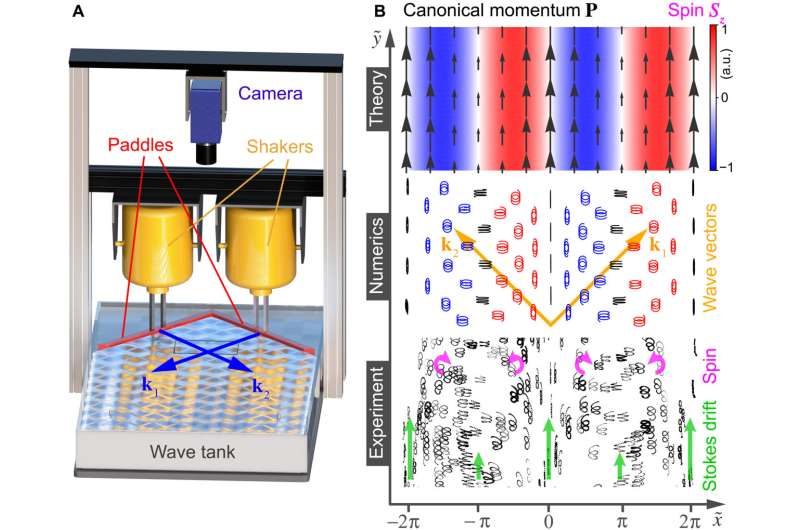Visualizing spin angular momentum in water waves

Water waves can be used to visualize fundamental concepts, such as spin angular momentum, that arise in relativistic field theory, RIKEN physicists have shown. This will help to provide new insights into very different wave systems.
First introduced nearly a century ago, the concept of spin angular momentum, or spin, is critically important in quantum physics and underpins the emerging fields of spintronics and quantum computing. In high school physics, the spin of an electron is usually described as the electron spinning on its axis, similar to a spinning top. But a fuller description of spin is more abstract and doesn't yield itself to simple pictures.
Now, Konstantin Bliokh of the RIKEN Theoretical Quantum Physics Laboratory and his co-workers have shown that spin can appear as small circular motions of water particles in water waves. Their research is published in Science Advances.
"We were surprised that our collaborators from the Australian National University were able to observe this effect in experiments so readily," says Bliokh. "Similar phenomena in optics and acoustics tend to be too tiny to observe, but with water waves, everything is a few millimeters in size and you can observe it with your eyes. That's the beauty of this experiment."
It was also unexpected because the concept of spin comes from the mathematics that describes relativistic field theory, and does not apply directly to water waves. But the researchers were able to show that there is a mathematical connection between water waves and formal theory for spin angular momentum. As is often the case in physics, diverse phenomena that appear to be totally unrelated can be connected by common mathematics.
"It's nice to gain a unified picture of different wave systems and see the parallels between them," says Bliokh. "This approach illuminates the physics behind different phenomena and could be very fruitful for the future development of different fields." He notes that insights could flow both ways and that we could learn more about fluid dynamics from the connection.
Bliokh also considers that the demonstration could be helpful for teaching quantum field theory. "Quantities like spin density are derived in a very abstract way. It appears in some equations, but you observe totally different things in experiments," says Bliokh. "For the first time, we have directly observed spin density in water waves. So it's really a platform for visualizing properties that are hidden in quantum field theory."
The team is now exploring how field theory can be used to gain new insights into other types of classical waves.
More information: Konstantin Y. Bliokh et al, Field theory spin and momentum in water waves, Science Advances (2022). DOI: 10.1126/sciadv.abm1295
Journal information: Science Advances
Provided by RIKEN





















